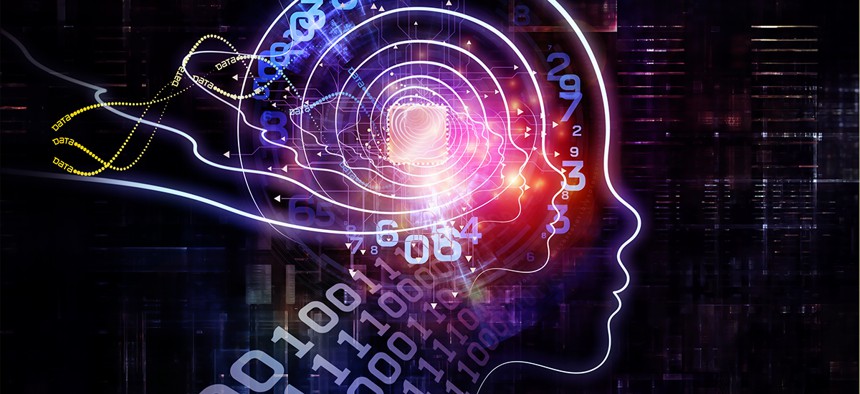This Is What Happens When an AI System Learns to Talk

agsandrew/Shutterstock.com
The system models how humans learn the rules of language.
Linguists and scientists have debated for decades whether humans are born with an innate ability for language, or whether we simply learn it from the examples of parents and peers. A new paper published Nov. 11 in PLOS ONE may hold a clue to the answer.
Researchers from the University of Sassari, Italy, and the University of Plymouth, UK, set out to build a system that would model how we learn the rules of language, and in the process developed Annabell: an AI system capable of learning English through conversation.
With no prior information about how grammar works, no existing database of vocabulary, and no understanding of word categories, Annabell (or Artificial Neural Network with Adaptive Behavior Exploited for Language Learning) has learned to answer questions with the fluency of a four-year-old child. After Annabell was fed 1587 sentences, it was able to produce 521 of its own sentences, using 312 different words. Annabell was able to answer questions about what other people like and where things are located with more than 80% accuracy. It was also able to describe past “experiences.”
Annabell’s human teacher “talks” to it by typing into a computer terminal, using the same simple language an adult would address to a child. At first Annabell responds with kind of random answers, the way a child might, but over time it learns from the human’s affirmative feedback (“I like that!”) which responses are appropriate.

As lead author Bruno Golosio tells Quartz, “This is a step toward supporting the hypothesis that our high level cognitive functions involved in language and reasoning don’t require innate knowledge. It supports the idea that what we learn is a result of our experiences, particularly our social interactions.”
The system is an artificial neural network, which means that it mimics the neural exchanges in the human brain, and changes when it learns something new. This technology is used for all kinds of things—to automatically generate photo captions, email responses that sound like you, clickbait headlines, and famously, super trippy “dream” images.
But says Golosio, Annabell wasn’t built with any particular applications in mind, but rather to further research on how our own brains work. He says the goal is to “understand the relationship between cognitive functions and the neural processes that support them, the relationship between our minds and brains.”
“You cannot say you fully understand the brain if you cannot simulate it,” he adds.
Of course, says Golosio, Annabell doesn’t quite simulate a real four-year-old: The system lacks intuition, creativity, and curiosity.
(Image via agsandrew/Shutterstock.com)





